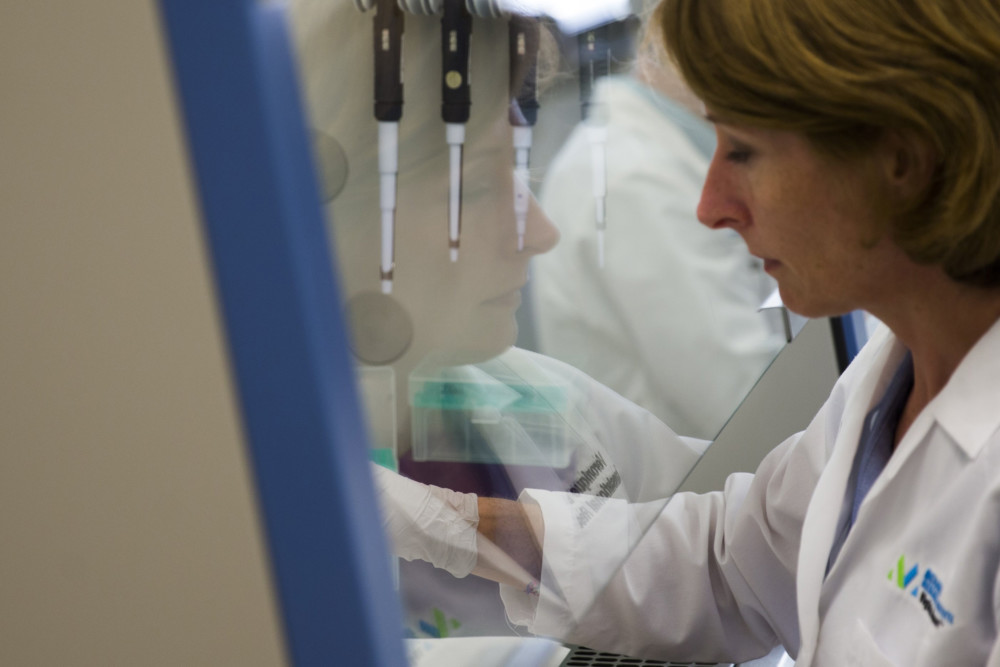By Sandi Doughton
The Seattle Times
WWR Article Summary (tl;dr) A new discovery by researchers holds out the hope of the better diagnosis and treatment for allergies.
SEATTLE
Allergy sufferers know the drill: Eyes that itch and water; sneezes that won’t stop; the fear that a hidden morsel of peanut will trigger a life-or-death crisis.
Over-the-counter drugs and allergy shots deliver relief to some people, but not others.
Now, a discovery by Seattle researchers holds out the hope of better diagnosis and treatment for allergies of all types, and may even lead to a cure someday.
“I think it’s a big deal,” said Dr. David Robinson, an allergy specialist at Virginia Mason Medical Center and co-author of the study, which is featured on the cover of this week’s edition of the journal Science Translational Medicine. “Ultimately we’re interested in fixing allergies and treating people, but you have to understand it first.”
Led by researchers at Virginia Mason’s Benaroya Research Institute, the Seattle team is the first to find a way to distinguish the “bad” immune-system cells that trigger allergies from “good” immune cells that fight infection.
They also showed that effective allergy therapy banishes the bad cells from the body.
“If you are allergic, you have those bad cells,” said lead author Erik Wambre. ” If you are not allergic, you don’t.”
That means scientists should be able to develop a test to identify people at risk of allergies, even at a very young age, he said. For parents, that could eliminate the panicked trips to the emergency room that are often the first indication that their child has a dangerous food allergy.
The ability to monitor the level of bad cells in a patient’s blood would also allow doctors to quickly determine whether treatment is working. But it’s the possibility of stamping out the bad cells altogether that has the researchers most excited.
“I’m pretty optimistic,” said Wambre. “My hope is that we might find a drug that will specifically destroy the (bad) cells, or at least stop them.”
Almost 50 million Americans suffer from nasal allergies, while about 4 million children have food allergies. The Asthma and Allergy Foundation of America estimates the total amount spent on drugs, shots and other health care at nearly $18 billion a year.
Allergic reactions are triggered when the immune system mistakenly sounds the alarm over harmless substances like pollen or dust or cat dander, unleashing a cascade of chemicals that cause the nose to drip, the sinuses to clog and the airways to swell shut.
Identifying the cells responsible has been tough because there are so few of them, Wambre explained. A milliliter sample of blood can contain more than a million white blood cells, but only a handful fall into the “bad” category.
Finding them is like trying to locate an individual among the nearly 700,000 people in Seattle, he said.
The key to the team’s success is a technique pioneered at Benaroya by William Kwok. The method uses molecules called tetramers tailored to latch onto specific cell surface proteins, then to light up when they find a match.
Working with blood from Virginia Mason patients with and without allergies, the researchers screened each sample for 200 proteins or other characteristics _ at a cost of thousands of dollars per test. It took them seven years to zero in on five key differences between good and bad cells, Wambre said.
This week’s paper reports results from 80 patients with allergies and 34 without, but the team has tested samples from hundreds of patients with a wide range of allergies, Robinson included.
“I’m patient zero for a lot of our studies,” he said.
After years of immunotherapy, his blood is free of the “bad” cells that used to plague him with seasonal grass allergies. The researchers also showed similar results in a small group of patients involved in an experimental treatment for peanut allergies.
David Cousins, an allergy researcher at the University of Leicester in the United Kingdom, discussed the significance of the discovery in an accompanying article in the journal.
The study is “an excellent piece of research,” he said in an email. But he cautioned that more work will be required to develop standard tests to distinguish bad cells from good, and to show that the bad cells really are common to all types of allergic diseases.
“Ideally, the results need to be confirmed in several different research laboratories to make sure the results are robust,” he said.
Robinson, whose allergy symptoms are gone, said many of his patients aren’t as lucky. After years of allergy treatment, it’s not uncommon for people to relapse, particularly with food allergies.
That’s why the idea of a complete cure is so appealing.
“The potential may be there for turning off the allergic process,” he said. “Honestly, we’re not sure how far this is going to go at this point.”














































































































































































































































































































































































